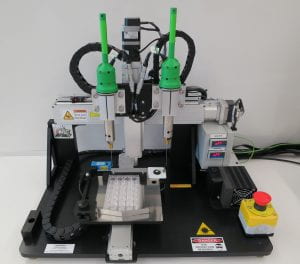An Organ Emergency
Since the late 1990s bioengineers have been working day and night on a new technology that they think can change the world: 3D printed human organs. At the time of this blog post in 2019 there are over 114,000 Americans on the waiting list for various organ transplants. And a shocking 20 people die every day waiting for available organs. Clearly the lack of handy organs is an incredibly pressing issue. This is why the work being done around the world to further push the boundaries of organ replication is so essential. But it begs the question, when can we expect this science to be widely available?
The History of Bioprinting
3D printing has come a long way since its humble beginnings in 1983. In the beginning 3D printing was only used to make plastic models of parts that would then be made from metal using more conventional methods. However as the years went on the potential for 3D printable materials has skyrocketed. It is now more than possible to 3D print extremely strong metal components and even entire bridges. Looking at the lengths 3D printing had come it was just another step forward to begin experimenting with printing biological material. At first scientists experimented with creating scaffolds in the shape of essential organs and covering them in specialized donor cells. This was effective in creating working organs, but scientists were not satisfied. They wanted to print using living bioink.
The problem with printing using live cells is that, like anything alive they need constant sources of water and nutrients. This problem gave rise to the invention of “Microgel“, a gelatin made from vitamin rich materials that is used to support the bioink both structurally and nutritionally. Bioprinters often have two printing heads, one for bionink and the other for micogrel.
The Benefits of Bioprinting?
Bioprinting is not only an incredible technological advancement, but also a huge money saver. It is estimated that with the rise of bioprinting organ transplant costs may see a drastic decrease. Today, a typical organ recipient is facing costs upwards of $300,000. With new competition from the bioprinting industry the simplicity and ease of creating suitable organs and performing procedures will greatly diminish the cost of treatment.
When Will Bioprinting See Widespread Use?
It is hard to say when man made organs will be all over the place, but there are significant advancements being made every day. For example the cornea, the essential exterior to the human eye, is an organ that is extremely close to being ready for practical use. With the use of a one of a kind bioink, researchers at New Castle University were able to produce a clear, circular disc that precisely resembles a cornea. This cornea, which can be printed in just 10 minutes, can be custom fit using a scan of the patients eye. Although more research is needed into the long term safety of a real life procedure, this goes to show that bioprinting is not technology of the distant future. The age of bioprinting is just around the corner.
In closing, bioprinting is in my opinion some of the most important scientific work being done right now. There is still much work to be done. But a future where any organ can be replicated in a lab and printed up on the spot is not as far away as it may seem. The progress being made day by day will quite possibly change the world forever. It will bring new hope to thousands and will save countless lives, but at what cost? Only time will tell.



Leave a Reply